#directed by j frakes
Text
Beverly Crusher reading her grandmother's erotic journal entries and then having a sex dream. THEN she's haunted by some 30yr old hottie who has maybe seduced all the prior female generations of her family (I wasn't listening lol too busy being in shock.) What is this? Outlander? FML. Season 7 is completely off the rails. 😭
Also Picard totally acknowledges his JACKET in this episode and I'M SCREAMING
#Star Trek tng#konigs left pec watches#dinnae go to the HOOS? Dammit#directed by j frakes#clearly still in his Insurrection era#star trek the next generation#Star Trek#star trek: tng#jean luc picard#captain picard#beverly crusher#dr beverly crusher#lt commander data#commander data#star trek data#geordi la forge#worf star trek#lieutenant worf#worf#worf son of mogh#will riker#william t riker#commander riker#deanna troi#counselor troi
19 notes
·
View notes
Text
Congratulations to the 'Loki' team on once again being nominated for a Hugo Award!
Best Dramatic Presentation, Short Form
Doctor Who: “The Giggle”, written by Russell T. Davies, directed by Chanya Button (Bad Wolf with BBC Studios for The BBC and Disney Branded Television)
Loki: “Glorious Purpose”, screenplay by Eric Martin, Michael Waldron and Katharyn Blair, directed by Justin Benson and Aaron Moorhead (Marvel / Disney+)
The Last of Us: “Long, Long Time”, written by Craig Mazin and Neil Druckmann, directed by Peter Hoar (Naughty Dog / Sony Pictures)
Star Trek: Strange New Worlds: “Those Old Scientists”, written by Kathryn Lyn and Bill Wolkoff, directed by Jonathan Frakes (CBS / Paramount+)
Star Trek: Strange New Worlds: “Subspace Rhapsody”, written by Dana Horgan and Bill Wolkoff, directed by Dermott Downs (CBS / Paramount+)
Doctor Who: “Wild Blue Yonder”, written by Russell T. Davies, directed by Tom Kingsley (Bad Wolf with BBC Studios for The BBC and Disney Branded Television)
The Hugo Awards will be presented August 11, 2023, at WorldCon in Glasgow.
29 notes
·
View notes
Text


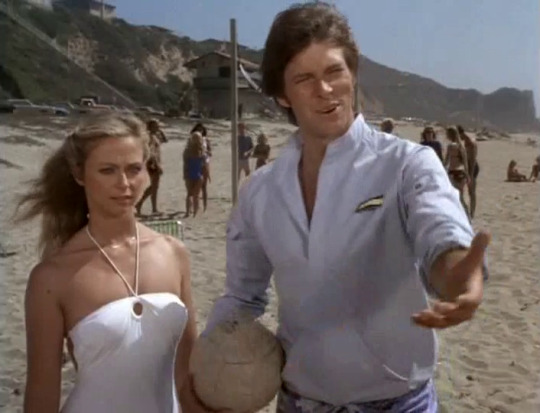

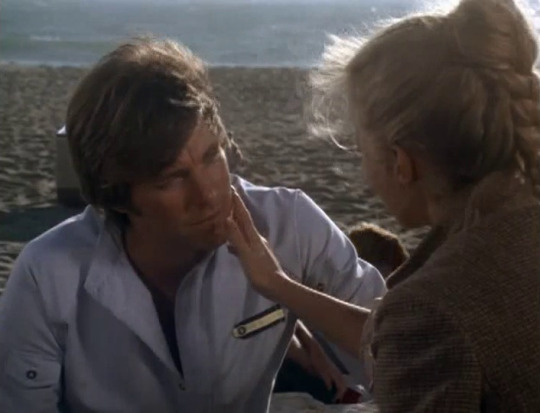


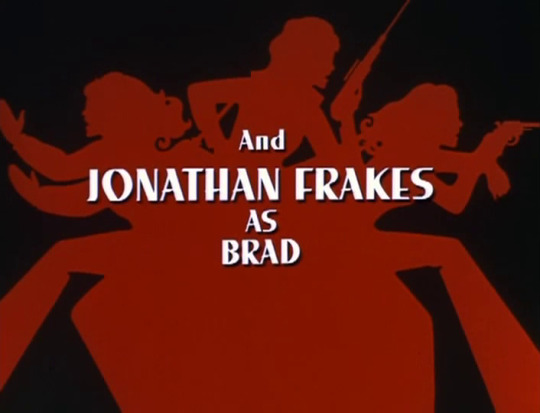
Today in the Department of Before They Were Star Trek Stars, Jonathan Frakes guest stars in "Angel on my Mind," episode 10 of the third season of Charlie's Angels (original air date November 22, 1978).
Frakes plays a friendly surfer/beach bum type who helps Kris when she's suffering from amnesia caused by a head injury sustained when she accidentally walks in on a homicide in progress.
Other Trek Connections:


Edward J. Lakso wrote and produced this episode and wrote the Star Trek episode "And the Children Shall Lead."


Kim Manners, who served as production manager for "Angel on my Mind," went on to direct the Next Generation episode "When the Bough Breaks" before doing his best-known work as Co-Executive Producer of The X-Files.


Michael Witney played the killer of the week in this episode, and Tyree, Captain Kirk's contact on the planet Neural in the Star Trek episode "A Private Little War."
#star trek#star trek tos#star trek the original series#star trek the next generation#charlie's angels#1960s tv#1970s tv#tv sci fi#tv crime drama#jonathan frakes#edward j lasko#kim manners#michael witney#cheryl ladd#jenny sherman#1980s tv#1990s tv
14 notes
·
View notes
Text
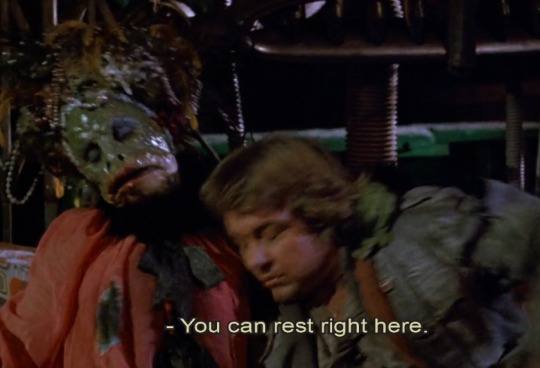
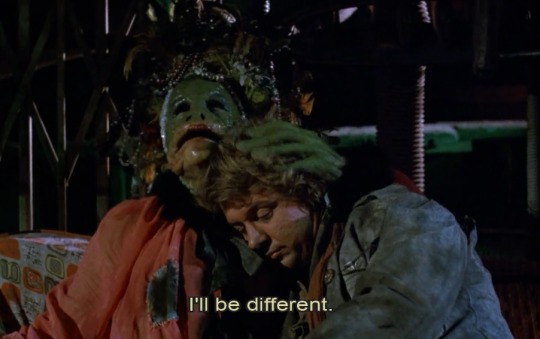
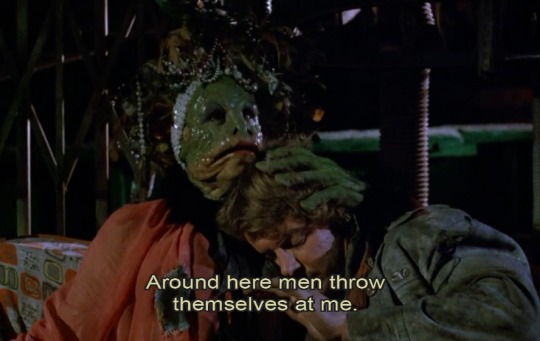
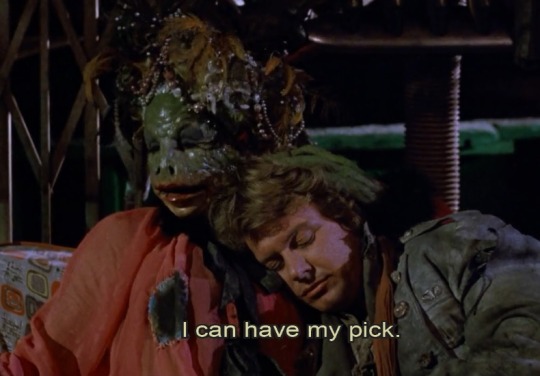

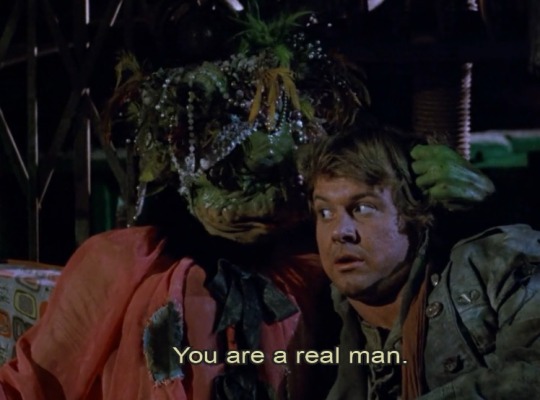
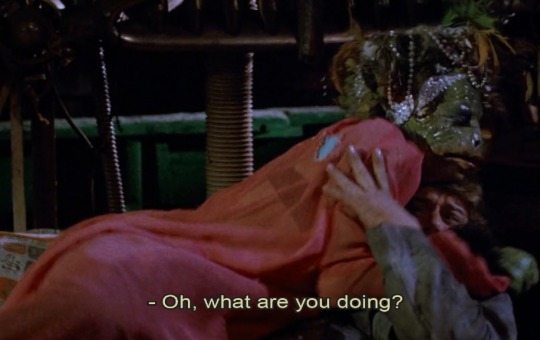
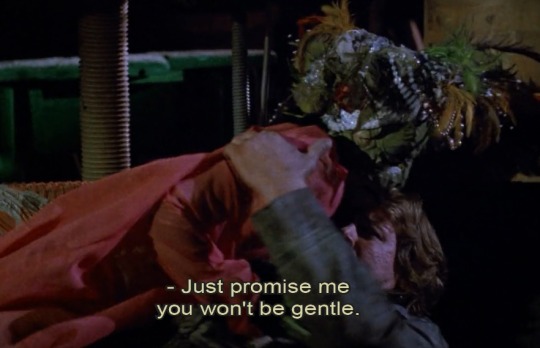
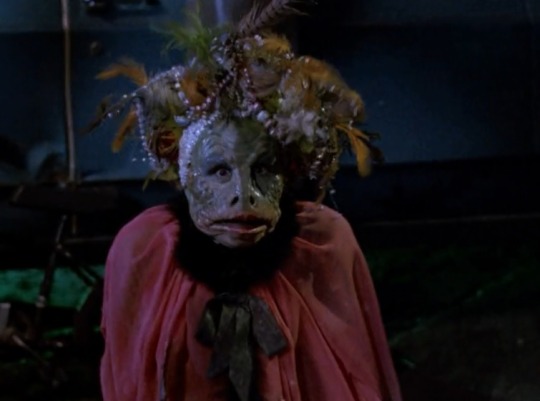

Hell Comes to Frogtown (1988) co-directed by Donald G. Jackson and R. J. Kizer, and written by Jackson and Randall Frakes. The film stars professional wrestler Roddy Piper as well as Sandahl Bergman
#Hell Comes to Frogtown (1988)#1988#80's#80s#Roddy Piper#American science fiction action film#science fiction action film#post-apocalyptic wasteland#my edit#cut#80's movies#80s movies#movies
16 notes
·
View notes
Text
Every Film I Watched in 2022
The Matrix (1999, dir. Lana Wachowski & Lilly Wachowski)
Bidoof’s Big Stand (2022, dir. Shaofu Zhang)
Samurai Cop (1991, for. Amir Shervan)
The Matrix Resurrections (2021, dir. Lana Wachowski)
Citizen Kane (1941, dir. Orson Welles)
Tetsuo II: Body Hammer (“鉄男II BODY HAMMER” 1992, dir. Shinya Tsukamoto)
The Elephant Man (1980, dir. David Lynch)
Grandma’s Boy (2006, dir. Nicholaus Goossen)
Always Be My Maybe (2019, dir. Nahnatchka Khan)
Game Night (2018, dir. John Francis Daley & Jonathan Goldstein)
When We First Met (2018, dir. Ari Sandel)
The Kid (1921, dir. Charlie Chaplin, 1972 rerelease)
Menace II Society (1993, dir. Albert Hughes & Allen Hughes)
Duck Soup (1933, dir. Leo McCarey)
30 Minutes or Less (2011, dir. Ruben Fleischer)
Chimes at Midnight (1965, dir. Orson Welles)
Money Plane (2020, dir. Andrew Lawrence)
Man with a Movie Camera (“Человек с киноаппаратом” 1929, dir. Dziga Vertov, Cinematic Orchestra soundtrack)
Godzilla (1998, dir. Roland Emmerich)
City Lights (1931, dir. Charlie Chaplin)
Krull (1983, dir. Peter Yates)
Klute (1971, dir. Alan J. Paluka)
The Lawnmower Man (1992, dir. Brett Leonard)
Area 51: The Alien Interview (1997, dir. Jeff Broadstreet)
Ratty (2020, dir. John Angus Stewart)
Heavy Metal (1981, dir. Gerald Potterton)
The Northman (2022, dir. Robert Eggers)
Autumn Sonata (“Höstsonaten” 1978, dir. Ingmar Bergman)
Battles Without Honor and Humanity (“仁義なき戦い” 1973, dir. Kinji Fukasuka)
Battles Without Honor and Humanity: Deadly Fight in Hiroshima (“仁義なき戦い 広島死闘篇” 1973, dir. Kinji Fukasuka)
Battles Without Honor and Humanity: Proxy War (“仁義なき戦い 代理戦争” 1973, dir. Kinji Fukusaku)
Battles Without Honor and Humanity: Police Tactics (“仁義なき戦い 頂上作戦” 1974, dir. Kinji Fukusaku)
Battles Without Honor and Humanity: Final Episode (“仁義なき戦い 完結篇” 1974, dir. Kinji Fukusaku)
Logan’s Run (1976, dir. Michael Anderson)
The Vietnam War (2017, dir. Ken Burns & Lynn Novick)
The Devil Wears Prada (2006, dir. David Frankel)
Best in Show (2000, dir. Christopher Guest)
Shaolin and Wu Tang (“少林與武當” 1983, dir. Gordon Liu, dub)
Shin Godzilla (“シン・ゴジラ” 2016, dir. Hideaki Anno & Shinji Higuchi)
The Legend of the Suram Fortress (“ამბავი სურამის ციხისა” 1985, dir. Sergei Parajanov)
The Six Directions of Boxing (“六合八法” 1980, dir. Hsu Tien-Yung, dub)
Shaolin vs Lama (“少林鬥喇嘛” 1983, dir. Lee Tso-Nam, dub)
Inside the Mind of a Cat (2022, dir. Andy Mitchell)
Prey (2022, dir. Dan Trachtenberg)
Marathon Man (1976, dir. John Schlesinger)
Final Destination (2000, dir. James Wong)
Final Destination 2 (2003, dir. David R. Ellis)
Final Destination 3 (2005, dir. James Wong)
The Final Destination (2009, dir. David R. Ellis)
Final Destination 5 (2011, dir. Steven Quayle)
Mulan (1998, dir. Tony Bancroft & Barry Cook)
No Time to Die (2021, dir. Cory Joji Fukunaga)
The Munsters (2022, dir. Rob Zombie)
House of 1000 Corpses (2003, dir. Rob Zombie)
One Night in Miami… (2020, dir. Regina King)
Magnificent Obsession (1954, dir. Douglas Sirk)
The Knight Before Christmas (2019, dir. Monika Mitchell)
Halloween (1978, dir. John Carpenter)
Noel Next Door (2022, dir. Max McGuire)
Ice Sculpture Christmas (2015, dir. David Mackay)
Alexander Nevsky (1938, dir. Sergei Eisenstein)
Love Hard (2021, dir. Hernán Jiménez)
Falling for Christmas (2022, dir. Janeen Damien)
A Christmas Prince (2017, dir. Alex Zamm)
Holidate (2020, dir. John Whitesell)
Cyborg (1989, dir. Albert Pyun)
Full Metal Jacket (1987, dir. Stanley Kubrick)
Star Trek Generations (1994, dir. David Carson)
Christmas Vacation (1989, dir. Jeremiah S. Chechik)
Star Trek: First Contact (1996, dir. Jonathan Frakes)
Bridget Jones’s Diary (2001, dir. Sharon Maguire)
Teenage Mutant Ninja Turtles (1990, dir. Steve Barron)
Waterworld (1995, dir. Kevin Reynolds)
Elf (2003, dir. Jon Favreau)
Feliz NaviDAD (2020, dir. Melissa Joan Hart)
Emmet Otter's Jug-Band Christmas (1977, dir. Jim Henson)
7 notes
·
View notes
Text
How Babylon 5 Made Star Trek Better
https://ift.tt/eA8V8J
There are a few patient zeroes for proving serialized storytelling on TV viable. Breaking Bad, Mad Men, Battlestar Galactica, and the so-called “golden era” of TV aren’t possible without a few under-the-radar precedents. Different critics will point to different examples, but when it comes to science fiction and fantasy shows, that list gets a lot smaller. Some might say Buffy’s interconnected season-long arcs are the most influential, while Trekkies tend to lean heavily on the innovation and risk-taking of Deep Space Nine’s serialization in later seasons. In fact, one prominent DS9 podcast — The Rules of Acquisition — has effectively argued that DS9 created the foundation for all contemporary TV that followed. And then there’s The X-Files.
All of these examples are valid because, clearly, in the late 1990s, there was a vortex swirling that led to a revitalization of TV conventions that was most noticeable in genre shows. Buffy and DS9 probably deserve equal credit, but in terms of its influence on science fiction, and Star Trek in particular, the series that is (sometimes) overlooked is Babylon 5. By July 1994, Babylon was wrapping up its first season, and the future of science fiction on TV would never be the same…
In retrospect, Babylon 5 made Star Trek better in the 1990s. Like Paul McCartney being inspired by the Beach Boys in the ‘60s, Babylon 5 was the scrappy ‘90s sci-fi underdog that, in a roundabout way, inspired the best of Trek to be better. Here’s why…
Did Deep Space Nine rip-off Babylon 5? (Or vice versa?)
If you were watching sci-fi TV in the ‘90s, you probably had at least an argument about whether or not the two TV shows about people living on a space station were ripping off each other. I had an ill-informed one with my dad in 1995. My dad claimed he thought it was clear that Deep Space Nine (which premiered on January 3rd, 1993) had ripped-off Babylon 5 (which premiered on January 26th, 1994), and I claimed the reverse. Neither of us was right, but it’s easy to see why fans we’re so perplexed at the time. Here’s the list:
Both shows featured a cast of humans living with aliens on a space station, trying to work out various peace deals.
Both had no-nonsense female first officers, Kira on DS9, Ivanova on B5 (though in the B5 pilot episode, “The Gathering,” the first officer was Laurel Takashima, played by Tamlyn Tomita, who very recently turned up on Star Trek: Picard.)
In the first season, both had lead characters who were “Commanders” not “Captains.”
Both of these Commanders (Sisko and Sinclair) were veterans of major battles/wars, and their characters were (initially) defined by this experience.
Both space stations were positioned next to a strategic portal through space; the Wormhole in DS9 and a major JumpGate in B5.
And finally, both shows expected the viewer to have watched some, if not all, of the previous episodes in order to know what was going on. Again, in the ‘90s, this was not common for any TV.
So, what’s the deal? Well, as Babylon 5 creator J. Michael Straczynski has gone-on record saying many, many times: “Were Pillar and Berman [DS9 creators] aware of B5 at any time? No. Of that, I am also confident. The only question in my mind is to what degree did the development people steer them?”
Babylon 5 had been in development since 1987, but there’s not really any reason to believe that camp Star Trek was super-interested in ripping off a space station show and using it for its own purposes. So, the theory floated by JMS and others is basically this: Because B5 had been pitched to Paramount before landing with Warner Bros, it’s feasible that Paramount Studio executives encouraged the DS9 team to use various elements from the B5 pitch without telling them about the existence of B5. There’s also one rumor that states that Warner and Paramount were planning on launching a joint network in the early ‘90s, and that from a studio-level point-of-view, at some point in time, Babylon 5 and DS9 WERE THE SAME SHOW, even if the people making the shows were unaware of that. That last one is pretty out-there, and also hasn’t been publicly verified, so, there’s a good bet it might not be accurate.
Bottom line: Today, most consider the similarities between B5 and DS9 to be superficial and mostly coincidental. It’s water under the space bridge, Wormhole or Jumpgate. And yet, there are more concrete connections.
The Babylon 5 + Star Trek connections
In front of the camera, Babylon 5 had a few obvious Star Trek connections. The recurring villain Alfred Bester (named after the famous SF novelist) was played by Walter Koenig, best known to Trekkies as Pavel Chekov. Patricia Tallman, who played telepath Lyta Alexander on B5, was a familiar stunt performer on The Next Generation and DS9 (often doubling for Gates McFadden, Nana Visitor, and Terry Farrell ) and also appeared in notable episodes like “Starship Mine.” On top of that, at the height of the rivalry between B5 and Star Trek, Majel Barret — the first lady of Star Trek and Gene Roddenberry’s widow — guest-starred in the 1996 Babylon 5 episode “Point of No Return.” She played a character named Lady Morella, the widow of the Emperor of the planet Centauri Prime. This cameo was a calculated move on the part of B5 creator JMS and Barret. Basically, the goal here was to send a message to all fandoms: Be cool.
Behind-the-scenes, there were a few more big Star Trek connections. Harlan Ellison was a “Creative Consultant” for Babylon 5 and Trekkies obviously know his mega-famous Trek episode, “City on the Edge of Forever.” And, JMS himself was also a big Trekkie. But we’ll get to that.
How Babylon 5 (maybe) made Trek writing better in the ‘90s
Okay. So, there’s no reason to believe that Deep Space Nine ripped-off Babylon 5 in the ‘90s, but that doesn’t mean Deep Space Nine and Voyager weren’t made better by the existence of some friendly competition. Documentaries like What We Left Behind make it clear that DS9 had its own agenda, separate and apart, from, well, pretty much anything. That said, DS9 didn’t start out as a serialized show. Those big story arcs came later. Babylon 5 on the other hand, did start out serialized, which when you consider that most seasons were 22 episodes long, that’s really saying something. DS9 always had ongoing storylines, but the heavy serialization — the types of back-to-back story arcs that happened during the Dominion War — happened years after the show got off the ground. Did Babylon 5 give the writers’ room of DS9 the confidence to go this route? Most would probably say no. And yet, B5’s serialization was its signature. With DS9, the serialization became its signature eventually.
Adam Nimoy, son of Leonard Nimoy, directed the most pivotal episode of Babylon 5, the 1996 season 3 finale, “Z’ ha’dum.” These days, this kind of thing happens all the time — Jonathan Frakes directs episodes of Star Trek: Discovery and The Orville in the same year. But back in 1996, this kind of thing was more shocking. It’s not provable, but with so many Star Trek people working on Babylon 5, it feels unlikely that the writers and producers never watched the show. Because if they had, it seems like they would have been fired-up.
How Babylon 5 saved Star Trek’s special effects in the ‘90s
In the early 1990s, real sci-fi on TV didn’t use CGI. If you wanted to do spaceships, you used models. Even the sci-fi epic seaQuest DSV got away with heavy CGI use because, in essence, the ships were half-hidden underwater. But not Babylon 5. From 1994 onward, everything about the series was CGI. Initially, the VFX company that provided these effects was a company called Foundation Imaging. Because B5 had a budget of roughly a third of a Trek series of that era, CGI effects were the only way to survive. You might not think the CGI on B5 looks that realistic now, but you have to put it in context. Outside of maybe The Last Starfighter, nobody had really dared to do outer space ship VFX with anything other than models. B5 proved it could be done. The series also pioneered virtual sets, a practice that every single sci-fi show benefits from to this day.
But this isn’t an instance of Star Trek noticing someone doing CGI and thinking that it was a good idea. Foundation Imaging literally became a part of the Star Trek franchise in 1996. After 1995, Warner Bros decided to create the CGI for Babylon 5 in-house, which left Foundation Imaging in trouble. Luckily in 1996, the company started doing CGI for Star Trek: Voyager, which led to a longtime association with the Trek franchise. Up until 1996, for spaceship exteriors, Trek almost always used models. But that started to change after Foundation Imaging began working on Voyager. Though another VFX company — Digital Muse — did a bunch of DS9’s effects, Foundation Imaging was eventually needed on DS9 as well. Remember the greatest spaceship battle in all of DS9? Yep, that’s (mostly) Foundation Imaging.
In “Sacrifice of Angels,” the scope of the starship battle was too big for models to be used, and the workload too large for Digital Muse to handle alone. And so, Foundation was responsible for the epic moment in which the USS Defiant breaks through the Dominion lines. For most DS9 fans, this exact scene defines why the series is legit awesome. And, the truth is, if Babylon 5 hadn’t employed Foundation Imaging, if Babylon 5 hadn’t relied on CGI effects, the Defiant might not have flown like that. Everyone knows great VFX can’t save a bad sci-fi movie or TV series. But, in the late 90s, it was also true that bad VFX could prevent great sci-fi from being accepted. If Trek hadn’t slowly made the switch to CGI, it’s hard to believe Voyager would have continued to be exciting. Without Babylon 5 and Foundation, you can forget “Year of Hell.”
How Babylon 5’s creator predicted a Star Trek reboot
In 2005, after the cancelation of Enterprise was announced, JMS and Bryce Zabel co-authored a treatment for a possible reboot of Star Trek. This outline wasn’t done because anyone asked them to. It was done out of love for Star Trek. The basic concept was, at the time, fairly radical — do an entire reboot of Star Trek, in fact, the pitch was called Star Trek: Re-Boot the Universe. The idea was to give a new origin story for Kirk, Spock, McCoy, and the rest of the TOS crew. JMS used examples from his work in comic books: Fans can accept that this happens in a different universe. Sound familiar?
By 2009, the entire trajectory of Star Trek was redefined by the first J.J. Abrams reboot movie, which, superficially, is what JMS and Zabel pitched. True, the current Star Trek renaissance has gone away from the reboot universe. But, the viability for big-budget, cinematic Star Trek probably couldn’t have happened without the reboots. Again, we can’t prove that the JMS/Zabel pitch inspired Paramount to do their own reboot, but just like there may have been some synergy between DS9 and B5, the basic pitch is just too similar to ignore.
Conclusion
Babylon 5 was a not a Star Trek rip-off, but it did take place in the 23rd Century, and like the classic Trek, featured heroic human starship captains and their alien allies teaming-up to save the galaxy. In a sense, there was a retro-feeling to all of Babylon 5 that probably reminded ‘90s Trekkies more of TOS than of TNG or DS9. Throw Walter Koenig and Harlan Ellison into the mix, and B5 was like a tribute band for Star Trek: The Original Series. These days, fans of The Orville make similar comparisons between that series and the TNG heyday of the ‘90s. The difference, of course, is that B5 was created by J. Michael Straczynski, a guy who cut his teeth literally creating the scripts for your favorite ‘80s cartoons; from He-Man and the Masters of the Universe to The Real Ghostbusters. In short, Straczynski was someone who understood what sci-fi TV was in the ‘90s, and he knew its limitations. When he set out to make B5 he clearly did it with a lot of love for Star Trek.
JMS hired Star Trek actors for Babylon 5. He attempted to bridge the divide between Trek fandoms and the B5 fandoms. He even dreamed up a way to bring Trek back from the dead after it was seemingly canceled in 2005. J. Michael Straczynski maybe never formally wrote for Star Trek, but without him, and without Babylon 5, the world of Trek would have been much, much darker.
The post How Babylon 5 Made Star Trek Better appeared first on Den of Geek.
from Den of Geek https://ift.tt/2CTVBvy
3 notes
·
View notes
Text
Upcoming Tv Show 2020
2020 is underway, and you know what that means — more televised content than any human being could reasonably consume. Hey, they don’t our era “Peak TV” for nothing! Between the networks, cable channels and streamers (including new and emerging streamers like Disney+, Apple TV+, HBO Max, and NBC’s Peacock,) there are countless upcoming TV shows to put on your radar for the year, across all genres and featuring some of the most exciting talents in the game, in front of and behind the camera.
Join us Facebook Justinder
Upcoming Tv Show 2020
Aquafina Is Nora from Queens
Image via Comedy Central
Premiere Date: Jan 22
Network: Comedy Central
Fresh off her critically acclaimed, quieter than usual work in Lulu Wang’s dramedy The Farewell, Awkwafina’s next big project will feel more familiar — she’s literally playing herself. Awkwafina Is Nora from Queens refers to her real name, Nora Lum. And the Comedy Central program, produced and written in part by Awkwafina, will tell a semi-fictionalized, louder-than-real-life story of her arrested development in her 20s, trying to figure out what to do with her life while living at home in Queens with several of her family members, all of whom are perfectly cast. Her dad? BD Wong, having fun playing with lower energy than usual. Her grandmother? Lori Tan Chinn, who recently crushed in Orange Is the New Black. And her cousin? The rising comedy superstar Bowen Yang, currently scorching the earth on Saturday Night Live.
The show comes in part from Lucia Aniello, who serves as executive producer and directed the pilot. Her last Comedy Central show was Broad City, and it’s not hard to see some of that influential show’s DNA in the first looks at Nora from Queens — bright colors, loud voices, bold attitudes, and a light touch of the surreal. But Awkwafina’s work looks to be uniquely personal, an examination of her own life and family situation that’s about as one to one as a family sitcom can get (just look at the family members she name-checked in her Golden Globes speech and see how much they line up with who’s in this show). Awkwafina has been a relentlessly engaging, interesting voice in the comedy sphere since she first blew up, and I’m looking forward to seeing her drive her own vehicle. — Gregory Lawrence

Star Trek: Picard
Image via CBS All Access
Premiere Date: January 23
Network: CBS All Access
To be honest, I haven’t gotten much out of the post – J. J. Abrams era of Star Trek. The recent reboot trilogy featured some delightful performances (in particular Karl Urban absolutely crushing a subtle DeForest Kelly impression to play Dr. Leonard “Bones” McCoy), but the shift of focus from traditional science fiction to Star Wars-style action really disappointed me. Star Trek was never an action franchise, and that’s not what I liked about the Original Series or The Next Generation. I experienced the same lukewarm response to Star Trek Discovery, the first CBS All Access Star Trek series that sticks more closely to the Abrams formula of solving every conflict with epic space battles and phaser fights. Again, these things are objectively awesome, but they aren’t what I like about Star Trek (for example, in TOS and TNG, the phasers are rarely used and almost never effective against the episode’s threat).

Star Trek: Picard seems aimed more at curmudgeonly old Trek fans like myself; it’s a nostalgia grab on its face, and it’s peppered with cameos of popular characters from TNG and Voyager, including Ryker (Jonathan Frakes), Troi (Marina Sirtis), Data (Brent Spiner), and Seven of Nine (Jeri Ryan). But Patrick Stewart’s Jean-Luc Picard didn’t become one of the most beloved Star Trek characters of all time for no reason, and I’m genuinely pretty excited to see him return. Even though the trailers tease a very Star Wars story, in which Picard seems to be occupying an Obi-Wan Kenobi role mentoring a young “chosen one” warrior, I can’t wait to watch this goddamn show if for no other reason than to see Picard hang out on his sweet,
0 notes
Photo
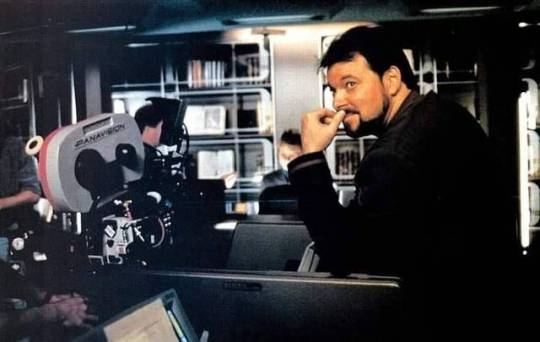
‘Star Trek: Discovery’ Adds Jonathan Frakes as a Director
Jonathan Frakes returning to the Star Trek universe? Make it so!
The major luminary from the Trek franchise will direct an episode of the CBS All Access show’s first season. Frakes, of course, played Commander William T. Riker on Star Trek: The Next Generation and in several Trek films. “Jonathan Frakes will rejoin the Trek world with Discovery,” writer-producer Gretchen J. Berg told EW. “He’s a fantastic guy and great director.”
Added fellow showrunner Aaron Harberts: “Our cast is dying to work with him.” Frakes is very experienced behind the camera, having helmed several episodes of TNG, Deep Space Nine, and Voyager, as well as the Trek films First Contact and Insurrection.
In addition, he’s directed episodes of several non-Trek titles such as Leverage, Burn Notice, and NCIS: Los Angeles. Berg and Harberts previously worked with Frakes when he directed five episodes of CBS’ Roswell.
3 notes
·
View notes
Text
SUMMARY
This film is set in a post-apocalyptic wasteland where few fertile men and women exist due to atomic fallout. As a result, the government places a high priority on those that can still breed. Shortly before the movie opens, a group of mutant amphibians (who have been exiled to the desert by humans) capture a group of fertile women and are using them as sex slaves.
Sam Hell (Piper) is a nomadic traveler who wanders the countryside. He is eventually captured by an organization of warrior-nurses, the closest thing to a government in his region of the world, who reveal that they located him by tracking the trail of pregnant women left in his wake. Their original plan was to use him as breeding stock with their collection of fertile women, but this was the group captured by the mutants. With their own attempts to capture the women failing, the group presses Hell into service as a mercenary; he is to infiltrate the mutant city (derogatorily referred to as “Frogtown”) and rescue the women. To make sure that the rebellious Hell follows his orders, he is forced to wear an electronic protective codpiece that will explode if he disobeys or tries to abort his mission. Having already taken numerous samples of reproductive material from him, he is now deemed far more expendable than the women themselves. To aid him in his mission (and make sure he follows the plan), he is paired with one of the nurses, Spangle (Bergman), and an aggressive guard named Centinella (Verrell).
During their journey to Frogtown, Hell tries numerous times to escape but quickly learns that a device Spangle carries will shock his genitals if used or if he gets too far away from it. Despite their rocky start and Spangle’s initial cold demeanor, the pair grow closer during the journey and eventually fall in love. When they reach Frogtown, everyone involved is captured. The frogs’ second-in-command, Bull (Nicholas Worth), tortures Hell and attempts to remove the codpiece for its technology. Meanwhile, a slightly drugged Spangle is forced to work as a slave and dance for the frogs’ Commander Toty (Brian Frank) in the notable “Dance of the Three Snakes” sequence. Proving more successful than she had wished, the nurse soon finds herself at the mercy of the aroused commander. However, with the codpiece now removed (Bull finally removed it with a chainsaw, but it blew up and killed him), the escaped Hell rescues her along with the group of fertile women (Ellen Crocker, Kim Hewson, Ilana Ishaki, Annie McKinon and Janie Thorson) held captive.
DEVELOPMENT/PRODUCTION
Donald G. Jackson had directed a $70,000 16mm direct-to-video feature for New World’s video division: ROLLERBLADE, a tale of “futuristic rebel nuns on skates with knives, “according to Jackson. On the strength of that project’s overseas sales, New World asked him to pitch ideas for another low-budget, direct-to-video feature. Jackson pitched HELL COMES TO FROGTOWN, a tongue in-cheek post-apocalypse action-adventure story, which he described as “ROAD WARRIOR meets PLANET OF THE APES, except they’re frogs.”
This slideshow requires JavaScript.
New World loved the script by Randall Frakes, who was supposed to co-produce the film with Jackson, and agreed to finance the project, which was to be shot 16mm, non-union, for $150,000. It was then that the project began to balloon. New World wanted a name in the cast and suggested Sybil Danning for a role intended for Suzanne Solari, who had appeared in ROLLERBLADE. As a bone, Solari was given the small part of a nomad girl in the film. Jackson did not think Danning was right for the part, so New World offered it to Sandahl Bergman, who was finishing up a two-picture contract with them. Unfortunately, the casting of Bergman meant that the whole film had to be cast SAG, which immediately raised the budget to $500,000. New World’s video division could not afford that price tag, so the film was moved over to the feature division where executives questioned whether the script’s extensive action and stunt requirements could be achieved for half a million dollars. They rebudgeted the film somewhere between $750,000 to $1,000,000.
This slideshow requires JavaScript.
“Then I got the phone call,” said Jackson. “They basically said, ‘We’re not going to trust you with a million dollars, but here’s what we’d like to do, because we like the project: we’ll give you a million, but we want you and R. J. Kizer to co-direct.” Kizer was the editor New World brought in to direct scenes of Raymond Burr for GODZILLA: 1985. Jackson was not pleased to lose control, but ultimately he decided it was a better career move to go for a bigger-budget theatrical release than another low budget video. New World brought on line producer Bill Edwards, who did not think the script could be shot for $1,000,000. He and executive in charge of production Neal Nordlinger raised the budget to $1.5 million. While at Alan Lansburg Productions, Nordinger had co-produced JAWS 3-D.
This slideshow requires JavaScript.
Said Jackson, “We had five accountants, two directors, three producers, one executive in charge of production and two executives in charge of the executive in charge of production-so everybody had his finger in the pie, getting their friends jobs instead of spending money on the film. They wouldn’t hire the lighting guy I wanted, so I had to pay additional money out of my pocket to get the right guy.”
The first and only time I ever saw the movie with an audience—prior to a couple of months ago—was on the old MGM lot in Culver City. The Cary Grant screening room. The audience was made up of the crew and some of the cast, and the movie dropped like a 10-ton stone into mud. I hated the movie. Hated it. Looking at it was like staring at a wrecked career. My friend William Wisher—who I mentioned earlier, and who was amazed my dopey script even got made—came up to me afterward and said, “I’m sorry they screwed up your movie, Randy.” That was the nail in the coffin. But I must also say that a few months ago, when the Cinefamily Theater here in L.A. did a one-night Rowdy Roddy Piper memorial screening of They Live and Hell Comes to Frogtown, the audience seemed to get all the jokes as intended. They were extremely appreciative and enthusiastic in their response. So, despite all the ruinous stuff that happened to compromise Frogtown, it evidently still hits the mark well enough for some people who like weird and funny stuff to enjoy. For that, I am grateful. And producing that movie was a huge learning experience, an on-the-job training that has helped me navigate this silly business and the people who presume to run it. – Randall Frakes (Producer/Writer)
The film went into production with former wrestler Rowdy Roddy Piper in the lead role of Sam Hellmond and frog masks by 21 year-old Steve Wang. Unfortunately, despite the rising budget, Wang’s budget was never increased, limiting what he could accomplish, so most of the mutant frog people are rather inexpressive. However, the radio-controlled mask for Commander Toty, the chief villain, features an impressive range of expressions, including bulging eyes, flaring nostrils, and flickering eyelids.
This slideshow requires JavaScript.
The production soon ran into trouble. Despite early agreements on a cinematic style inspired by samurai films and Italian westerns, Kizer and Jackson were just too different in their approach. “I knew it wouldn’t work I’m sure he didn’t like being in that position any more than I,” said Jackson. “R. J. in my opinion never liked the project. He wanted the money and the directing credit.”
Another major source of friction arose regarding the film’s photographic look. Jackson, who according to his usual practice was photographing as well as directing the film, clashed with the movie’s art director. “The executive in charge of production had a friend of a friend who had never been an art director – he was an architectural draftsman. I never liked the way he dressed the sets, and I kept changing them around to make them look good for the camera which really upset him and the executive in charge. All my sets looked better after being redressed. He was building them like for a stage play, not for a movie. He didn’t age it-everything was too new. I kept taking cans of flat black paint and aging everything down.
“After doing this for ten days, the final blow-up was in the bar scene. They had blow-up sex dolls, I found that really offensive. They had naked mannequins, I found that offensive. They had this big poster of Reagan as Max Headroom, which the guy had swiped from a Doonesbury cartoon. So I wanted that all torn down. I got in a violent argument with the art director, who said he was gonna quit. I wish he had. He didn’t.
“The next day, when I came to work, they said, “There’s a new cinematographer, and he’s not gonna fuck with the art director.’ And I was told to watch they didn’t want me to talk to R. J. on the set, only in the trailer, so he was happy.
This slideshow requires JavaScript.
“So I watched. I got tired of watching after six hours, so I grabbed a camera, went outside, and put together my own 2nd unit crew and started shooting a lot of insert shots. We shot two cameras on the pyrotechnics and fights and shot a lot of closeups of fingers pulling triggers and so on.”
By this time, Jackson’s co-producer Randall Frakes had already been fired for insisting the film be shot as written. Said Jackson, “The script was cut so drastically by Neal Nordinger and R. J. Kizer it no longer resembled the action script we wrote. New World said we couldn’t afford it, but I’d just shot a whole movie for hardly any money so I know it can be done.
“When I was shooting I was going as fast as anybody could go and everybody was complaining it wasn’t fast enough. As soon as they put on another d.p., the pace slowed down to one-half. The original schedule was twenty days. They shot twenty-two days principal, plus five more days of pickups because they didn’t cover the action properly-it wouldn’t cut together.”
The final product pleased neither Jackson nor New World, who, ironically enough, now plan to release it directly to video rather than theatrically.
Donald G. Jackson Interview
Tell us about the genesis of Hell Comes to Frogtown ? Where did you find the inspiration for frog mutants ? What kind of deal New World proposed to you ? And how do you feel about that afterward ?
Donald G. Jackson: There is a section of Los Angeles known as Frogtown. The story goes, that back in the 1940s this area was overwhelmed by a large invasion of Frogs — which is why it got its name. I had a friend Sam Mann, who was one of the actors in Roller Blade and lived in this area. We were driving along one day and he came up with the title, Hell Comes to Frogtown. From there, I ran with the idea and that is how the movie developed.
New World had made so much money on Roller Blade they offered to finance Hell Comes to Frogtown. My original plan was to shoot the movie with Sam Mann and Suzanne Solari (both from Roller Blade) as the leads. I was going to shoot it on 16 mm, with my Bolex — as I had done with Roller Blade. But then, New World decided they wanted to “Up” the budget. The problem is, the minute you let the devil in the door, the devil is going to take control over you. And, that is what happened with New World and Hell Comes to Frogtown. They decided that they wanted to cast name talent and take over the production of the film. So, the movie evolved from being a 16 mm art film, to a relatively high budget 35 mm cult movie. Sadly, my friend Sam didn’t get to play Sam Hell and Suzanne was only given a small part in the film.
Were Roddy Piper and Sandahl Bergman your firsts choices for the roles of Spangle and Sam Hell ? What were they like on the set ?
Donald G. Jackson: No, as stated, my original plan was to shoot the movie with Sam Mann and Suzanne Solari as the leads. But, New World wanted to use Roddy Piper as he was a very famous wrestler at the time — and this was going to be his first movie.
As a fan of wrestling, I was happy to have him. But, as you can understand, what occurred was not fair to my friend Sam. I think I may have made the wrong choice by not standing by my friend Sam, who actually came up with the title and the idea for the movie. But, I spoke with him and he seemed Okay with what was happening. Though Hell Comes to Frogtown is, no doubt, my most famous feature, by my accepting New World’s offer, I believe it did set a lot of bad karma in motion.
Regarding Sandahl Bergman: She had just finished Conan: The Barbarian, and they wanted to use her for her name power, as well. I had very little to do with any of the casting of the film. Again, this is the problem when a large production company becomes involved in a project — the actual filmmaker is allowed very little creative control. Which is why I have never again worked with a large production company. But, Piper and Bergan were both very nice people to work with.
Anything to say on Cec Verrell (Centinella)?
Donald G. Jackson: No, just somebody cast by New World. Also, very nice
The “Dance of the Three snakes” scene didn’t really stand its promises ? Did Sandahl Bergman have something to do with that ?
Donald G. Jackson: In the script, Bergman’s character was to be naked in this scene. On the set, she would have nothing to do with nudity, however. So, it was one of those power struggle things happening between the actor and the director. Due to New World’s influence and decision, the actor won.
William Smith is one of my favorite actors. How did you get in touch with him ? He would have made a perfect Sam Hell too, don’t you think ? Are you still in touch with him ?
Donald G. Jackson: Yes, Bill is a great actor and a great friend. He has been around the film industry forever. And, I have known him for a lot of years. I put him in my films whenever I can.
Nicolas Worth is also brilliant, even under his heavy make-up. A very talented actor. Did you notice him from his creepy performance in Don’t Answer the Phone (1980) ?
Donald G. Jackson: No, he was cast by New World.
The makeup of the Frogmen are excellent, could you tell us about that ?
Donald G. Jackson: Steve Wang who went on to direct films like Kung Fu Rascals, The Guyver, and Drive was the main force behind the frog masks and make-up. He is a great guy and has gone on to do a lot of special effects work for a number of very big feature films.
This slideshow requires JavaScript.
There’s always comedy coupled with eroticism and sexual content in your movies that remind me of the films of Russ Meyer. Do his films form part of your influence ?
Donald G. Jackson: Some of Russ’s stuff is great. Particularly when you think that he made them without the help of any of the big studios. But, he has never been an influence to me. It was more the avant-garde films from the 1960s like Dr. Chicago and Chinese Fire Drill that really inspired me as a filmmaker.
I think you’re also a car lover and “Hell Comes to Frogtown” showcases two amazing cars, were they part of your own collection ?
Donald G. Jackson: Yes, I am a big fan of classic cars. I love the cars made in Detroit from the 1950s and early 1960s. One of the cars in Frogtown is a 1962 Plymouth Belvedere. I found and purchased two at the same time. One, we customized for the film and the other one I customized to my own specification and have driven ever since.
R.J. Kizer, the guy guilty to have shot the useless and ugly new scenes of the American version of The Return of Godzilla is often credited as the co-director of Hell Comes to Frogtown. Why ? Was it imposed to you by New World ? Why ? What was your relations with him on the set ? Of which part is it exactly responsible in the final cut of the movie ?
Donald G. Jackson: Like a lot of people in the film industry, I sometimes say things, trying to soften the reality of what actually occurred in a particular situation and trying to make it more understandable for those who have never made a film. But, now is the time for me to spell out the truth.
Hell Comes to Frogtown was my baby. Though I have been the one to get the most press from the film, regarding Kizer, again, New World took over the project and said that was part of the deal — Kizer was going to be the co-director of the movie. Even though I was the creator, my complete creative control was taken away. New World became angry at my desire to maintain control over the project and I was eventually removed as the director and banned from the sets. There was never any collaboration.
Regarding the final cut of the film, New World handled it. Though I watched some of the editing — they didn’t like my flaring temper, when I didn’t like something I didn’t like. Again, this is why I have never worked with another big production company. Because it just takes all of the creativity away from the filmmaker.
CAST/CREW
Directed
Donald G. Jackson
J. Kizer
Produced
Donald G. Jackson
Randall Frakes
Written
Donald G. Jackson and
Randall Frakes (story and screenplay)
Roddy Piper as Sam Hell
Sandahl Bergman as Spangle
Cec Verrell as Centinella
William Smith as Captain Devlin/Count Sodom
Rory Calhoun as Looney Tunes
Nicholas Worth as Bull
Brian Frank as Commander Toty
Julius LeFlore as Squidlips
Eyde Byrde as Patton
Lee Garlington as Briefing Officer
Special Effects by
Grant Arndt … creature effects
Wayne Beauchamp … pyrotechnician
Makio Kida … creature effects
Crit Killen … creature effects
David Kindlon … creature animatronics (as Dave Kindlon)
Steve Patino … creature effects
Matt Rose … creature effects
Johnnie Saiko … creature effects
Steve Wang … creature effects
Ed Yang … creature effects
CREDITS/REFERENCES/SOURCES/BIBLIOGRAPHY
Scottshaw.com
slashfilm.com
Cinefantastique v18n05
Imagi-Movies v01n04
Hell Comes to Frogtown (1988) Retrospective SUMMARY This film is set in a post-apocalyptic wasteland where few fertile men and women exist due to atomic fallout.
0 notes
Text
2019 Iowa Law Review Issue: Administering Patent Law
By Jason Rantanen
I’m thrilled to announce the publication of the articles from the Iowa Law Review’s symposium, Administering Patent Law. (Although Chris Walker beat me to the punch by a mile.) It’s a terrific group of articles that focus on issues at the intersection of patent law and administrative law. Here’s the abstract of my introduction to the issue:
Ten years ago, few people—with the exception of a handful of visionary academics—spent much time thinking about the significance of administrative law to the patent system. Today, administrative law issues pervade the patent system, from examiners and patent judges up to the United States Supreme Court. At the same time, modern administrative law itself faces a series of challenges that call into question its fundamental premises, such as the degree of deference that courts should grant agencies and the amount of political control that is constitutionally permissible or required. What does all this mean for the future of patent law?
Thanks to the support of the David F. Hellwege fund at the Iowa Law School Foundation, this issue of the Iowa Law Review contains an amazing array of scholarship on these topics from some of today’s brightest and most prominent patent law thinkers.
And the articles themselves:
Administering Patent Law, Jason Rantanen
Rigorous Policy Pilots: Experimentation in the Administration of the Law, Colleen V. Chien
Reasoned Decisionmaking vs. Rational Ignorance at the Patent Office, John F. Duffy
A Functional Approach to Judicial Review of PTAB Rulings on Mixed Questions of Law and Fact, Rebecca S. Eisenberg
Patent Trial and Appeal Board’s Consistency-Enhancing Function, Michael D. Frakes & Melissa F. Wasserman
PTO Panel Stacking: Unblessed by the Federal Circuit and Likely Unlawful, John M. Golden
Elite Patent Law, Paul R. Gugliuzza
Patent Court Specialization, Sapna Kumar
Institutional Design and the Nature of Patents, Jonathan S. Masur
The Hamiltonian Origins of the U.S. Patent System, and Why They Matter Today, Robert P. Merges
Statutes, Common Law Rights, and the Mistaken Classification of Patents as Public Rights, Adam Mossoff
Machine Learning at the Patent Office: Lessons for Patents and Administrative Law, Arti K. Rai
Renewed Efficiency in Administrative Patent Revocation, Saurabh Vishnubhakat
Constitutional Tensions in Agency Adjudication, Christopher J. Walker
Prior Art in Inter Partes Review, Stephen Yelderman
All of the articles are available through direct links above. If you would like a physical copy of the issue, the Iowa Law Review editors have told me that you should contact the printer at [email protected] and request a copy of Volume 104, Issue 5. I’m not sure what the exact price is, but it’s likely be about $30 including shipping. (The whole volume is $53).
2019 Iowa Law Review Issue: Administering Patent Law published first on https://immigrationlawyerto.tumblr.com/
0 notes
Text
Star Trek: Picard - Poster: Has a new Number One?
New Post has been published on https://filmreviewonline.com/2019/07/10/star-trek-picard-poster-has-a-new-number-one/
Star Trek: Picard - Poster: Has a new Number One?
Check out the newly released Star Trek: Picard poster. Is that the new Number One next to Jean Luc? The Star Trek name tag seems to have a ‘J’ on it. Is this some tribute to Jonathan Frakes who played Riker aka Number One in the Star Trek: Next Generation series. The actor is also directing episodes 3 & 4.
Star Trek: Picard Poster Two
0 notes
Text
Seth Macfarlane, the creator of Family Guy, is deep in production of his new sci-fi comedy The Orville, a spoof series that looks remarkably like Star Trek.
The Orville is a one-hour science fiction series set years in the future that follows the adventures of the U.S.S. Orville, a mid-level exploratory vessel. Its crew, both human and alien, faces the wonders and dangers of outer space, while also dealing with the familiar, often humorous problems of regular people in a workplace…even though some of those people are from other planets, and the workplace is a faster-than-light spaceship. In the 25th century, Earth is part of the Planetary Union, a far-reaching, advanced and mostly peaceful civilization with a fleet of 3,000 ships. Down on his luck after a bitter divorce, Planetary Union officer Ed Mercer (MacFarlane) finally gets his chance to command one of these ships: the U.S.S. Orville. Determined to prove his worth and write a new chapter in his life, Ed finds that task all the more difficult when the First Officer assigned to his ship is his ex-wife, Kelly Grayson (Adrianne Palicki). As the new commander, Ed assembles a qualified, but eccentric crew, including his best friend, Gordon Malloy (Scott Grimes), who has problems with authority, but is the best helmsman in the fleet; Dr. Claire Finn (Penny Johnson Jerald), one of the Union’s most accomplished physicians; Bortus (Peter Macon), an alien from a single-sex species; Isaac (Mark Jackson), an artificial life-form from a machine society that thinks biological life-forms are inferior; navigator John Lamarr (J. Lee), whose casual humor cuts through even the most dire situations; Alara Kitan (Halston Sage), a young, inexperienced security officer whose home planet’s high gravity gives her superior physical strength; and Yaphit, a gelatinous creature voiced by comedian Norm MacDonald. Somehow, Ed and Kelly must put the past behind them and, with the help of the crew, navigate fascinating and sometimes dangerous adventures in outer space, as well as the tumultuous and captivating day-to-day personal relationships with their colleagues.
The first episode will be directed by Jon Favreau, with subsequent episodes directed by guest directors including Jonathan Frakes and Robert Duncan McNeill.
The series will premier on Fox sometime during late 2017.
Star Trek Spoof; The Orville Seth Macfarlane, the creator of Family Guy, is deep in production of his new sci-fi comedy The Orville, a spoof series that looks remarkably like Star Trek.
0 notes
Text


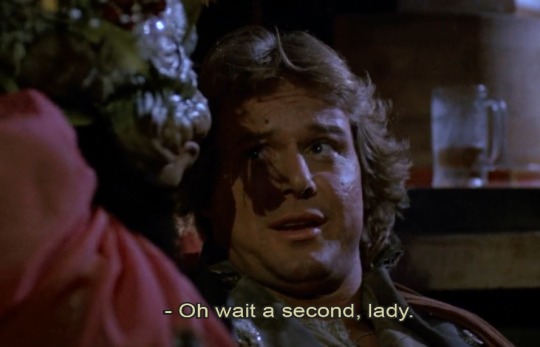
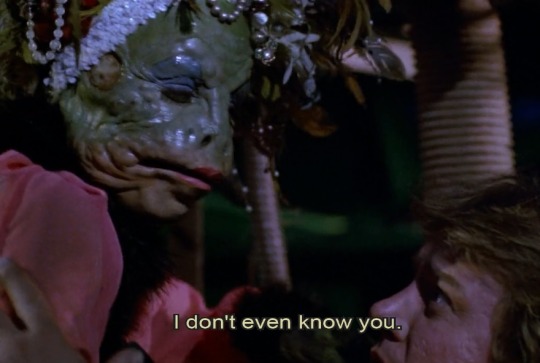

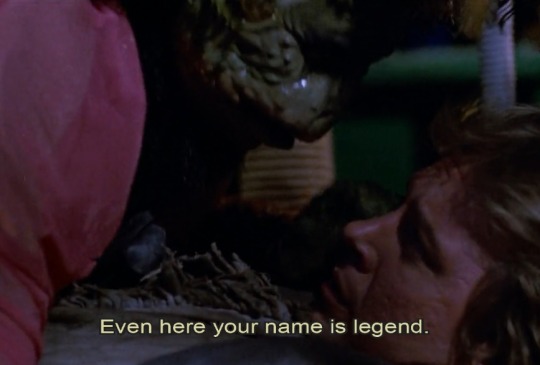

Hell Comes to Frogtown (1988) co-directed by Donald G. Jackson and R. J. Kizer, and written by Jackson and Randall Frakes. The film stars professional wrestler Roddy Piper as well as Sandahl Bergman
#Hell Comes to Frogtown#Hell Comes to Frogtown (1988)#1988#80's#80s#American science fiction action film#science fiction action film#Roddy Piper#Sandahl Bergman#Frogtown#post-apocalyptic wasteland#text#my edit#cut
13 notes
·
View notes
Text
2019 Iowa Law Review Issue: Administering Patent Law
By Jason Rantanen
I’m thrilled to announce the publication of the articles from the Iowa Law Review’s symposium, Administering Patent Law. (Although Chris Walker beat me to the punch by a mile.) It’s a terrific group of articles that focus on issues at the intersection of patent law and administrative law. Here’s the abstract of my introduction to the issue:
Ten years ago, few people—with the exception of a handful of visionary academics—spent much time thinking about the significance of administrative law to the patent system. Today, administrative law issues pervade the patent system, from examiners and patent judges up to the United States Supreme Court. At the same time, modern administrative law itself faces a series of challenges that call into question its fundamental premises, such as the degree of deference that courts should grant agencies and the amount of political control that is constitutionally permissible or required. What does all this mean for the future of patent law?
Thanks to the support of the David F. Hellwege fund at the Iowa Law School Foundation, this issue of the Iowa Law Review contains an amazing array of scholarship on these topics from some of today’s brightest and most prominent patent law thinkers.
And the articles themselves:
Administering Patent Law, Jason Rantanen
Rigorous Policy Pilots: Experimentation in the Administration of the Law, Colleen V. Chien
Reasoned Decisionmaking vs. Rational Ignorance at the Patent Office, John F. Duffy
A Functional Approach to Judicial Review of PTAB Rulings on Mixed Questions of Law and Fact, Rebecca S. Eisenberg
Patent Trial and Appeal Board’s Consistency-Enhancing Function, Michael D. Frakes & Melissa F. Wasserman
PTO Panel Stacking: Unblessed by the Federal Circuit and Likely Unlawful, John M. Golden
Elite Patent Law, Paul R. Gugliuzza
Patent Court Specialization, Sapna Kumar
Institutional Design and the Nature of Patents, Jonathan S. Masur
The Hamiltonian Origins of the U.S. Patent System, and Why They Matter Today, Robert P. Merges
Statutes, Common Law Rights, and the Mistaken Classification of Patents as Public Rights, Adam Mossoff
Machine Learning at the Patent Office: Lessons for Patents and Administrative Law, Arti K. Rai
Renewed Efficiency in Administrative Patent Revocation, Saurabh Vishnubhakat
Constitutional Tensions in Agency Adjudication, Christopher J. Walker
Prior Art in Inter Partes Review, Stephen Yelderman
All of the articles are available through direct links above. If you would like a physical copy of the issue, the Iowa Law Review editors have told me that you should contact the printer at [email protected] and request a copy of Volume 104, Issue 5. I’m not sure what the exact price is, but it’s likely be about $30 including shipping. (The whole volume is $53).
2019 Iowa Law Review Issue: Administering Patent Law published first on https://immigrationlawyerto.tumblr.com/
0 notes